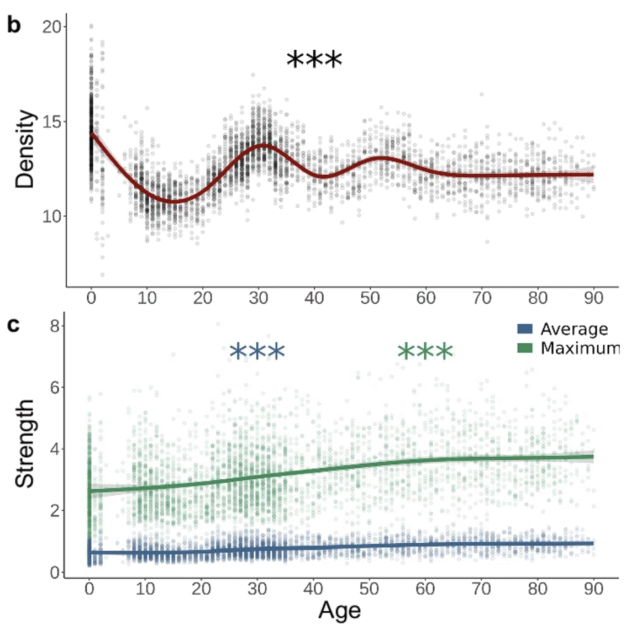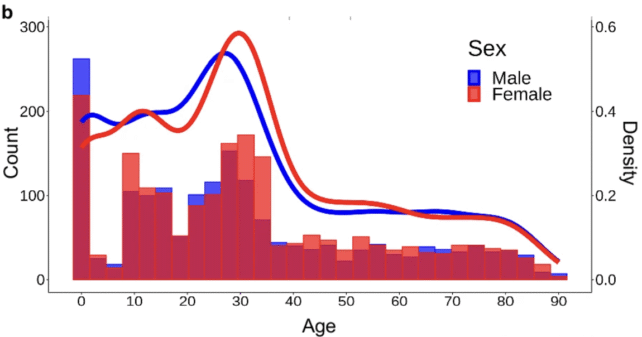The human brain is not a hard-wired machine but a malleable organ that is regularly re-shaping itself.
Neuroscientists at the University of Cambridge in the UK and the University of Pittsburgh in the US have now identified four major turning points in brain wiring between birth and death.
Like chapters of our lives, each of these neurological 'epochs' marks a new era of development or decline.
"Looking back, many of us feel our lives have been characterized by different phases," says senior author and neuroinformaticist Duncan Astle from Cambridge.
"It turns out that brains also go through these eras."
Related: Scientists Reveal Turning Point When Your Body's Aging Accelerates
According to the MRI brain scans of 3,802 neurotypical people between infancy and 90 years old, the architecture of the human brain takes a distinct turn at four ages.
These are around 9, 32, 66, and 83 years old, and they mark five epochs: childhood, adolescence, adulthood, early aging, and late aging.

"We know the brain's wiring is crucial to our development, but we lack a big picture of how it changes across our lives and why," says lead author and neuroscientist Alexa Mousley from Cambridge.
"This study is the first to identify major phases of brain wiring across a human lifespan."
The newborn brain is a far cry from the one that reaches old age, and while there's plenty of research on those early stages of life, it's less certain how the brain changes in middle age and beyond.
To better understand how the human brain matures, Mousley and her colleagues examined brain connectivity across nine decades of life.
They also measured several other factors, such as global efficiency, which reflects how efficiently different brain networks communicate, and modularity, which measures how segregated or specialized brain networks are from one another.
Ultimately, their study revealed five major life epochs.
The first lasts from birth to age 9, and it begins with a rapid expansion of gray matter – which contains mostly neuronal cell bodies – and white matter, which contains more axons that connect neurons to each other.
Closer to puberty, however, this overgrown 'bush' of wires begins to consolidate, with neural connections pruned back to become more efficient.

The second epoch of brain development is adolescence, when the central nervous system begins producing sex hormones like never before.
During this time, white matter continues to grow in volume, and the brain's networks undergo even greater refinement. The efficiency of communication at local and global levels improves each year.
All good runs, however, must come to an end. At age 32, the brain's architecture begins to stabilize, right around the age at which other studies indicate a plateau in intelligence and personality.
It's often said that our brains reach full maturity in our mid-20s. But that may be a simplistic explanation that refers only to certain brain regions, such as the limbic system and prefrontal cortex, which are broadly involved in emotions and decision-making.
The new study suggests that our brains don't mature until much later than we realized.
"Based purely on neural architecture, we found that adolescent-like changes in brain structure end around the early thirties," says Mousley.
"Around the age of 32, we see the most directional changes in wiring and the largest overall shift in trajectory, compared to all the other turning points."
During this epoch, brain regions become more segregated and compartmentalized – a slow process that persists for three decades.
Then, around age 66, the brain's architecture begins to show the first mild signs of deterioration. Each year, its structural networks become sparser, as neural connections decline in density and become less efficient.

"The data suggest that a gradual reorganization of brain networks culminates in the mid-sixties," says Mousley.
"This is probably related to aging, with further reduced connectivity as white matter starts to degenerate."
By age 83, the brain shows a distinct decline. Its final epoch is limited by a smaller sample size compared to the other age groups, but its defining feature, the researchers say, is the shift from global to local cognitive burdens.
At this point, whole-brain connectivity is on the decline, leaving local networks shouldering more of a person's cognitive effort.
There's still much that scientists don't know about how these brain changes impact our health and behavior, so these findings can only hint at what's going on under the surface.

More targeted research during certain life phases, especially among older groups, is also needed. Very recently, for instance, a brain scan study found that menopause is associated with distinct structural changes in the brain, possibly explaining some of its key symptoms, such as brain fog.
"These eras provide important context for what our brains might be best at, or more vulnerable to, at different stages of our lives," says Mousley.
"It could help us understand why some brains develop differently at key points in life, whether it be learning difficulties in childhood, or dementia in our later years."
The study was published in Nature Communications.

